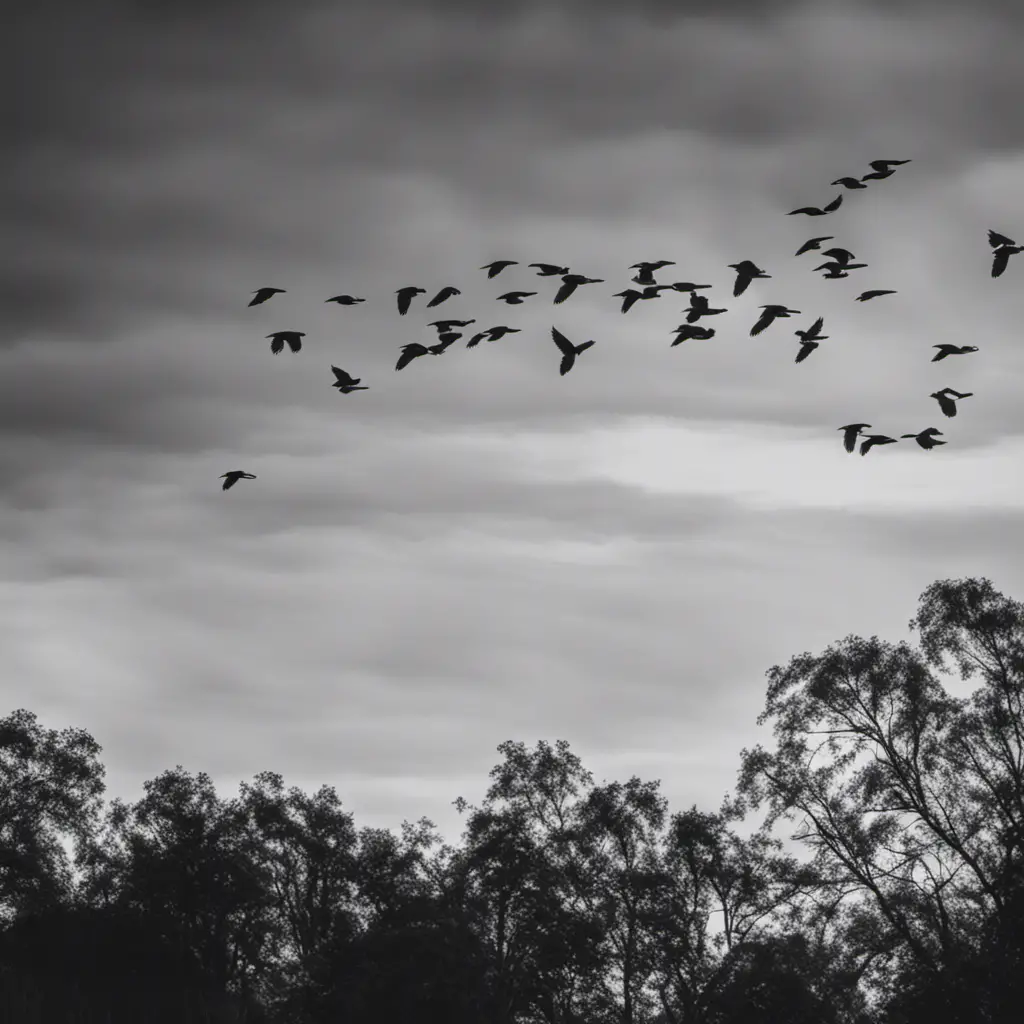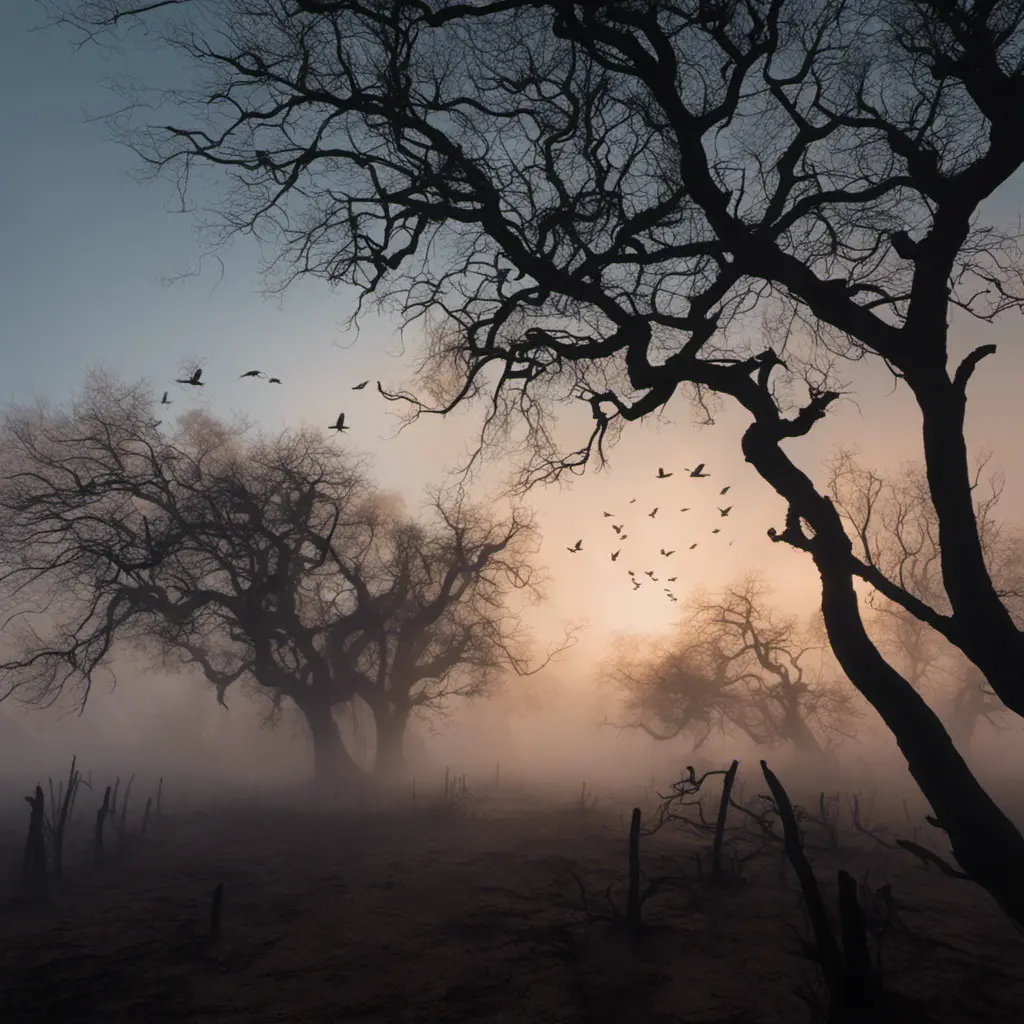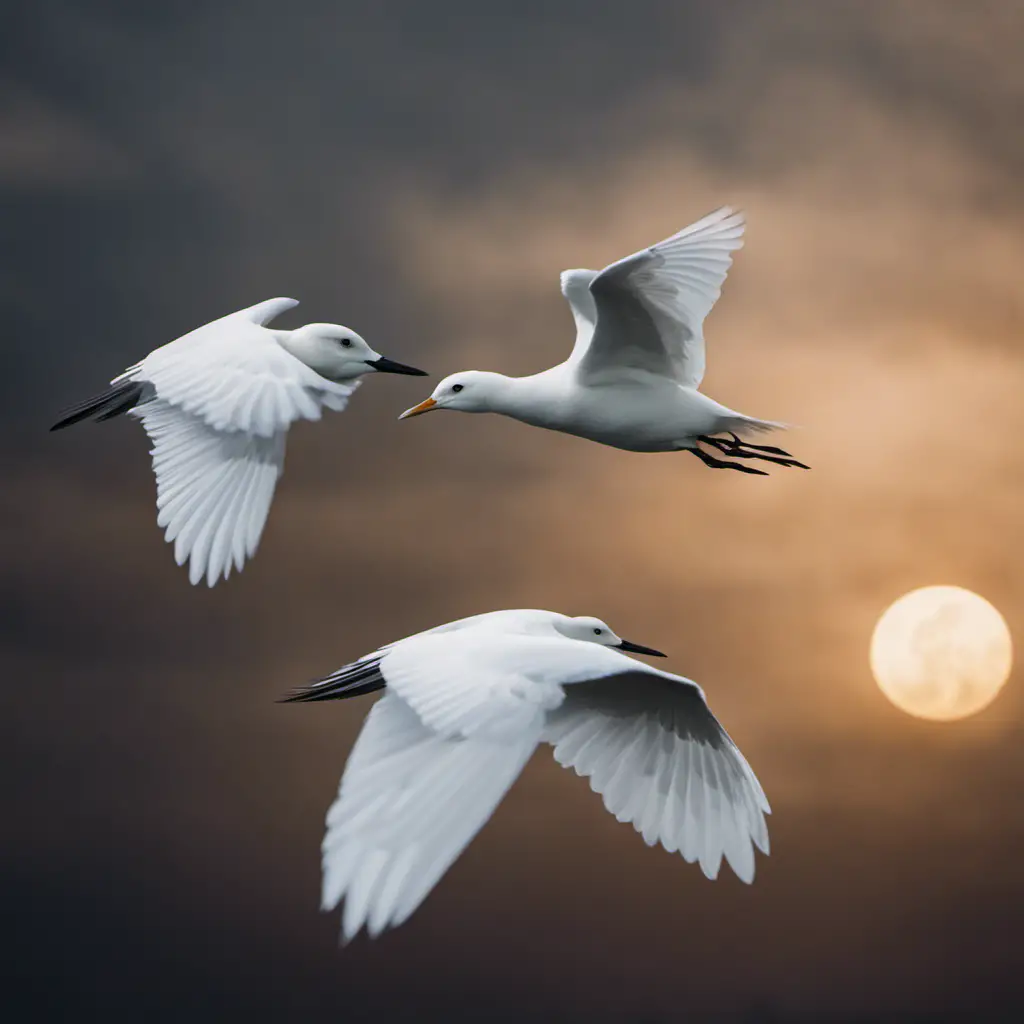Black and white birds are a fascinating group of avian species known for their contrasting plumage. This article aims to provide a detailed and objective analysis of some notable members of this group, including the Black-capped Chickadee, Black-and-white Warbler, Downy Woodpecker, Hairy Woodpecker, Northern Flicker, Eastern Meadowlark, Great Black-backed Gull, Osprey, and Pied-billed Grebe.
By exploring their physical characteristics, behaviors, and habitats, readers will gain a deeper understanding of these captivating birds and their unique adaptations.
Key Takeaways
- There are several species of black and white woodpeckers, including the Downy Woodpecker, Hairy Woodpecker, Pileated Woodpecker, Red-bellied Woodpecker, and Red-headed Woodpecker.
- Black and white songbirds include the Black-capped Chickadee, Black-and-white Warbler, White-breasted Nuthatch, and White-throated Sparrow.
- Black and white birds of prey include the American Kestrel, Belted Kingfisher, Great Black-backed Gull, and Osprey.
- Black and white seabirds include the Black Guillemot, Black Skimmer, Black Tern, and Common Tern.
Black-capped Chickadee

The Black-capped Chickadee is a small songbird native to North America, known for its distinctive black cap and bib contrasting with its white cheeks. This bird is a common sight in forests, woodlands, and suburban areas throughout its range. The Black-capped Chickadee is highly adaptable and can be found in a variety of habitats, including deciduous and coniferous forests. It is a sociable bird that often forms flocks with other chickadees, as well as other small songbirds.
In terms of diet, the Black-capped Chickadee primarily feeds on insects and spiders during the summer months. However, during the winter when food sources are scarce, it relies more heavily on seeds, berries, and nuts. This bird has a unique foraging behavior where it caches food in tree cavities or hidden locations, allowing it to retrieve food during harsh winter conditions.
Overall, the Black-capped Chickadee exhibits fascinating habits and displays remarkable adaptation strategies to ensure its survival in various environments.
Black-and-white Warbler
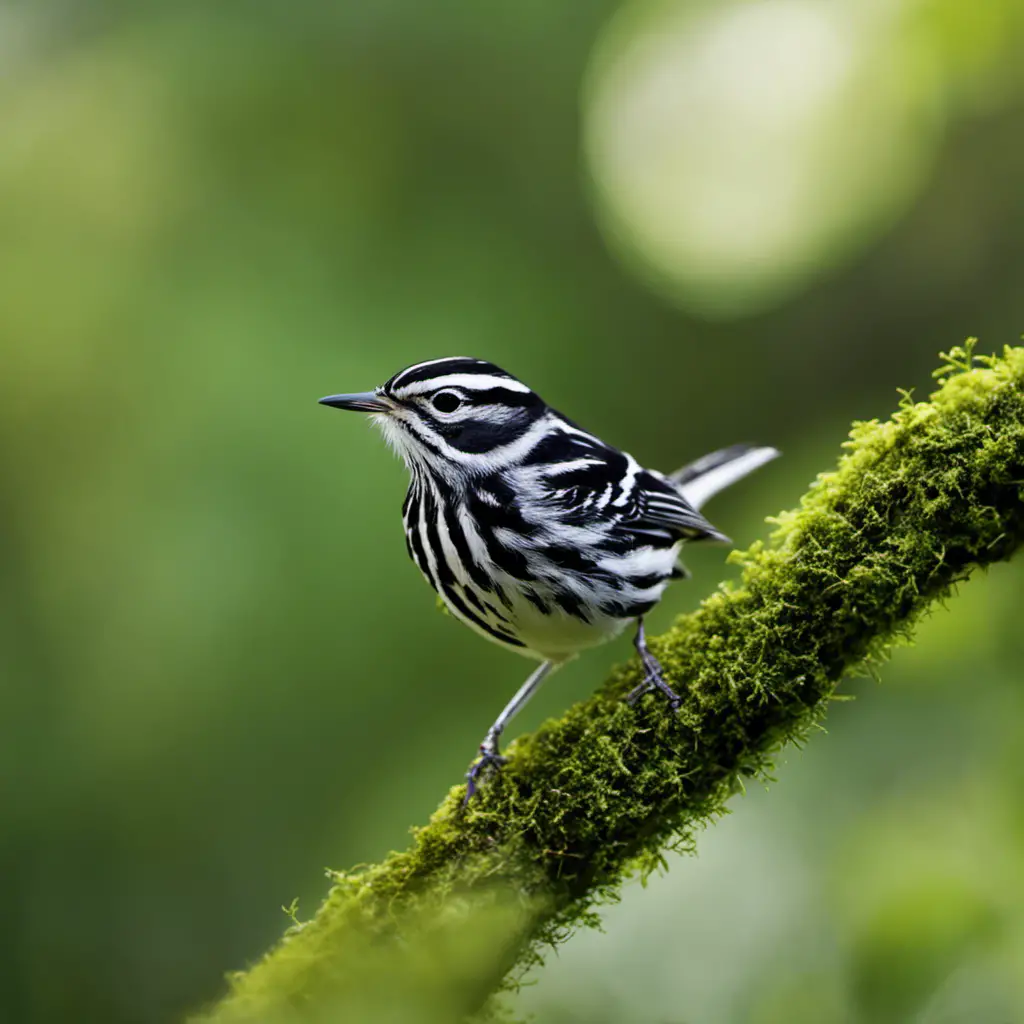
One notable member of the avian species characterized by contrasting colors is the Black-and-white Warbler. This small songbird is found in the eastern parts of North America, and is easily recognizable by its black and white striped plumage. The Black-and-white Warbler is known for its unique foraging behavior, as it often creeps along tree trunks and branches, similar to a nuthatch.
| Migration Patterns | Nesting Habits |
|---|---|
| – Black-and-white Warblers are migratory birds, spending their winters in the southern parts of the United States, Central America, and the Caribbean. | – During the breeding season, these birds prefer to nest in deciduous forests, where they build their nests on the ground, usually at the base of a tree or against a fallen log. |
| – They undertake long-distance journeys, traveling as far as South America for the winter months. | – The female Black-and-white Warbler lays a clutch of 4-5 eggs, which she incubates for about 10-12 days. |
| – They generally return to their breeding grounds in late April or early May. | – Both parents take turns feeding the young, which fledge after approximately 9-12 days. |
The Black-and-white Warbler’s migration patterns and nesting habits demonstrate their adaptability and ability to thrive in various habitats. Understanding these behaviors can help researchers and conservationists better protect and preserve this unique species.
Downy Woodpecker
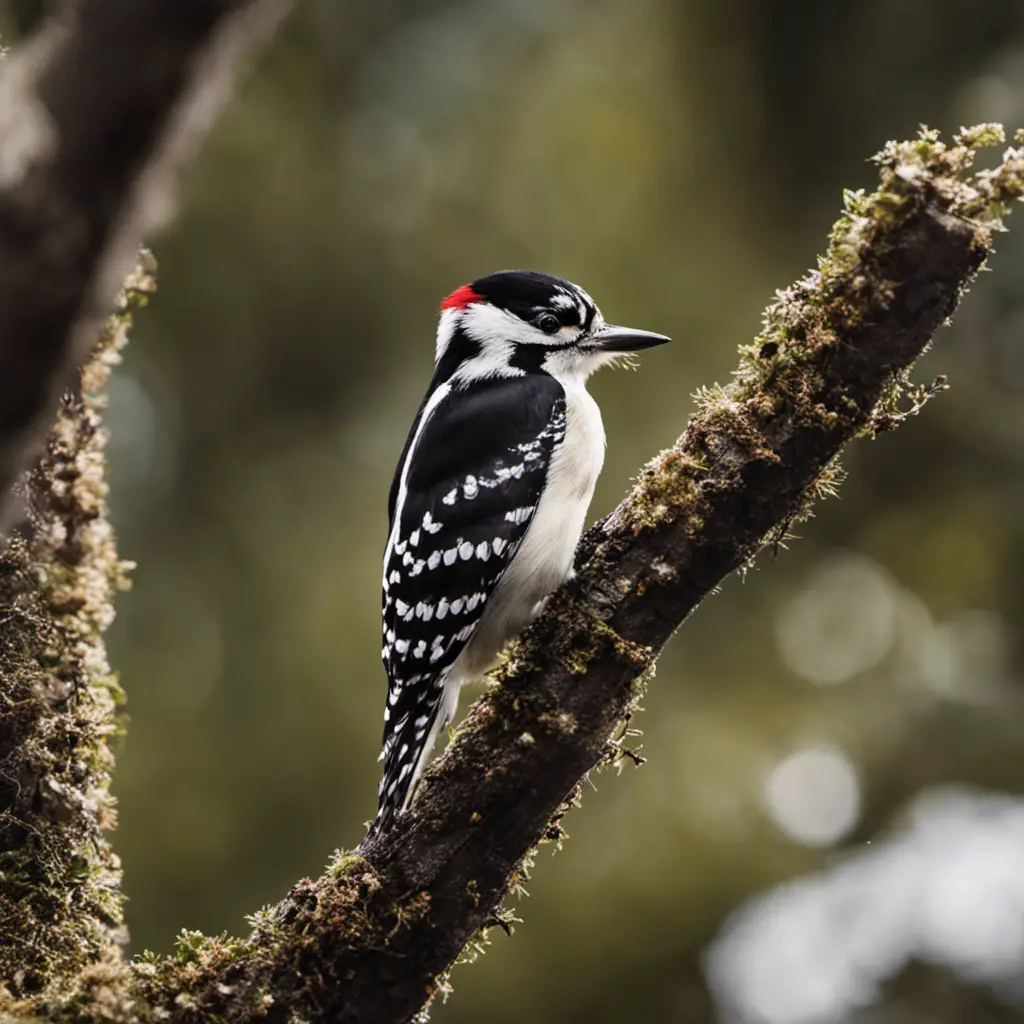
The Downy Woodpecker is a small species of woodpecker that can be found throughout much of North America. This black and white bird is easily recognized by its distinctive drumming behavior. The Downy Woodpecker uses its bill to tap against trees, creating a rapid drumming sound. This behavior serves multiple purposes, including communication and territory defense.
In addition to their drumming behavior, Downy Woodpeckers play an important role in maintaining forest health through their feeding habits. They primarily feed on insects, especially wood-boring insects like beetles and ants. By consuming these insects, Downy Woodpeckers help to control their populations and prevent damage to trees. They also feed on tree sap and fruits, further contributing to the spread of seeds and the overall health of the forest ecosystem.
Overall, the Downy Woodpecker is a fascinating bird that not only displays distinctive behaviors, but also plays a crucial role in maintaining the balance and health of forest ecosystems.
Hairy Woodpecker
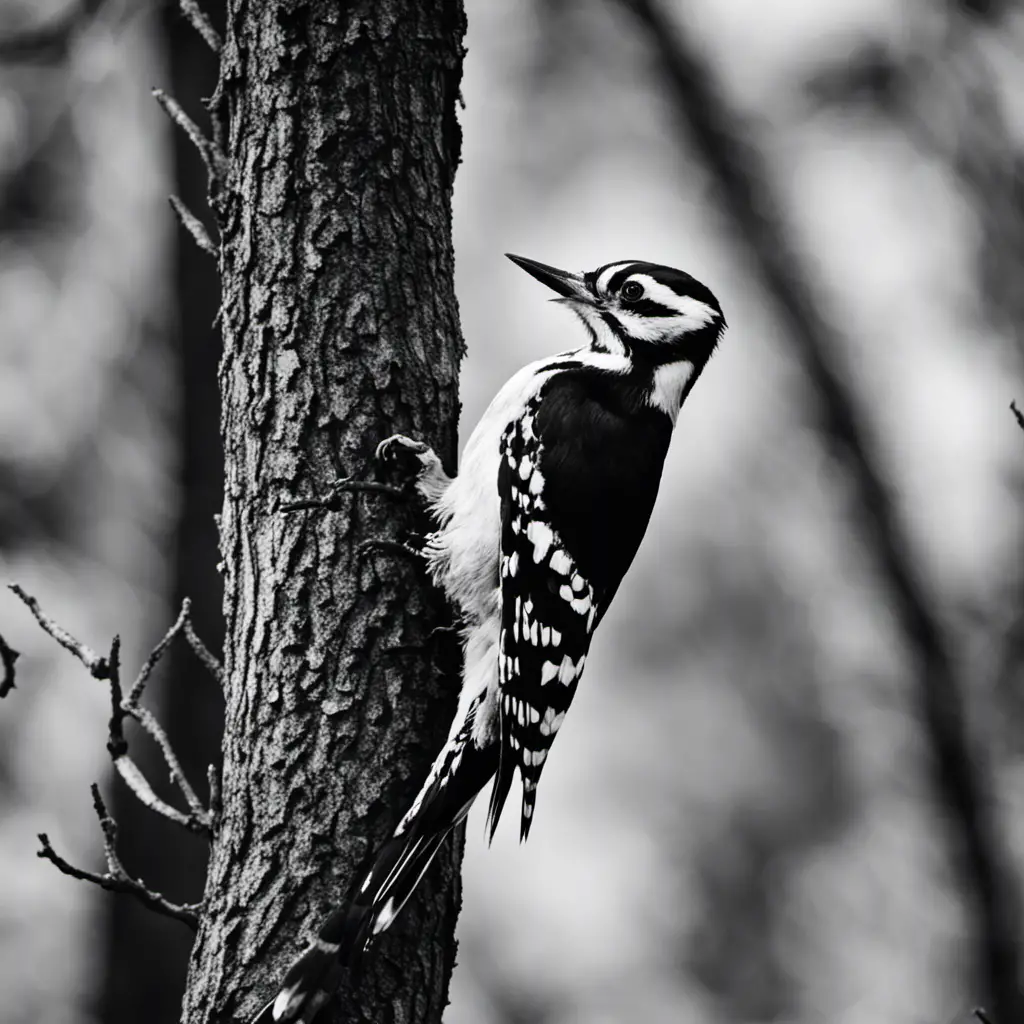
The Hairy Woodpecker, similar in appearance to the Downy Woodpecker, is commonly found across North America and also contributes to maintaining forest health through its feeding habits. This species, scientific name Picoides villosus, is a medium-sized woodpecker with black and white plumage.
The Hairy Woodpecker is known for its strong, chisel-like bill, which it uses to excavate cavities in trees for nesting and foraging. It primarily feeds on insects that dwell in the bark and wood of trees, such as beetles, ants, and caterpillars.
The Hairy Woodpecker’s behavior includes drumming on trees to establish territory and attract mates, as well as using its sharp beak to pry loose bark and search for prey.
Its presence in forests helps control insect populations and promotes the overall health of the ecosystem.
Northern Flicker
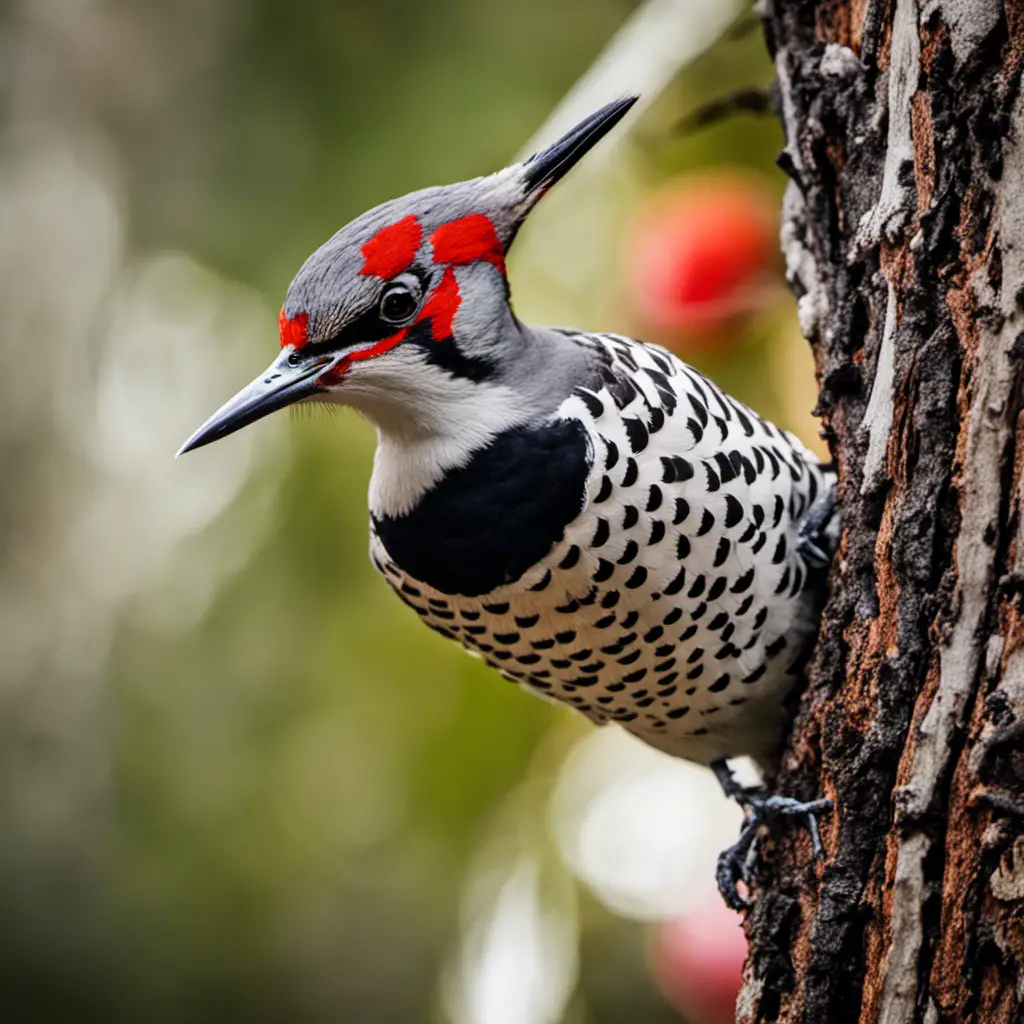
The Northern Flicker, a large woodpecker species found in North America, is known for its distinctive red plumage and behavior of drumming on trees to establish territory and attract mates. This species, scientifically known as Colaptes auratus, is a migratory bird that undergoes seasonal movements in search of food and breeding grounds.
Here are some key facts about the Northern Flicker and its migration patterns:
- The Northern Flicker is a common sight across North America, with a range that extends from Alaska to Central America.
- These woodpeckers are known for their distinctive flight pattern during migration, characterized by undulating flight and intermittent gliding.
- Northern Flickers undertake long-distance migrations, with some individuals traveling up to thousands of miles each year.
- Their migration routes vary depending on the subspecies and population, but generally, they follow a north-south pattern, moving towards warmer regions during the winter.
- During migration, Northern Flickers rely on a diverse diet of insects, fruits, and seeds to sustain themselves on their long journeys.
Understanding the migration patterns of the Northern Flicker is essential for conservation efforts and the preservation of their habitats along their migratory routes.
Pileated Woodpecker

The Pileated Woodpecker, a large woodpecker species found in North America, is easily recognized by its striking red crest and distinctive call that echoes through the forest.
These woodpeckers exhibit different behaviors in different habitats, adapting their foraging techniques and nesting preferences accordingly.
In mature forests, they often excavate large holes in dead or decaying trees, where they build their nests and forage for insects. In younger forests or areas with less tree cover, they may utilize telephone poles or even wooden structures for nesting.
However, the impact of habitat loss on Pileated Woodpecker populations cannot be understated. Destruction of mature forests and fragmentation of their habitat can lead to a decline in suitable nesting sites, reduced food availability, and increased competition with other woodpecker species.
Conservation efforts should focus on preserving and restoring their preferred habitats to ensure the long-term survival of this iconic species.
Red-bellied Woodpecker

The Red-bellied Woodpecker, a common woodpecker species found in North America, is known for its vibrant red cap and its ability to store food in crevices and tree bark. Despite its name, the red belly of this bird is often difficult to see, as it is mostly covered by its black and white feathers.
Feeding Habits:
- The Red-bellied Woodpecker primarily feeds on insects, but it also consumes fruits, nuts, and seeds.
- It uses its strong beak to drill into trees and extract insects from their hiding places.
- This woodpecker has a unique feeding technique called ‘anting,’ where it rubs ants on its feathers to help control parasites.
Habitat Preferences:
- The Red-bellied Woodpecker is commonly found in deciduous forests, woodlands, and suburban areas with mature trees.
- It prefers habitats with a mix of open spaces and trees, as it requires both for foraging and nesting.
Nesting Behaviors:
- This woodpecker excavates nest cavities in trees, usually in dead or dying wood.
- Both males and females take part in excavating the nest and incubating the eggs.
- They typically lay 3-6 eggs, which hatch after about 12 days.
Red-headed Woodpecker

The Red-headed Woodpecker (Melanerpes erythrocephalus) is a striking bird known for its vibrant red head and contrasting black and white plumage. Found primarily in North America, this woodpecker species has a varied diet consisting of insects, fruits, nuts, and seeds. It is an opportunistic forager, using its strong beak to excavate tree bark and probe crevices for prey. In addition to insects, it will also consume small vertebrates like lizards and frogs.
When it comes to nesting, the Red-headed Woodpecker constructs its nest in cavities within dead trees or large branches. Both male and female birds participate in excavating the nest cavity, which is lined with wood chips. The female typically lays 4-7 white eggs, which she incubates for about two weeks. Once the chicks hatch, both parents share the responsibilities of feeding and caring for the young.
The Red-headed Woodpecker is known for its aggressive territorial behavior and elaborate courtship displays, often involving drumming sounds and aerial acrobatics.
White-breasted Nuthatch
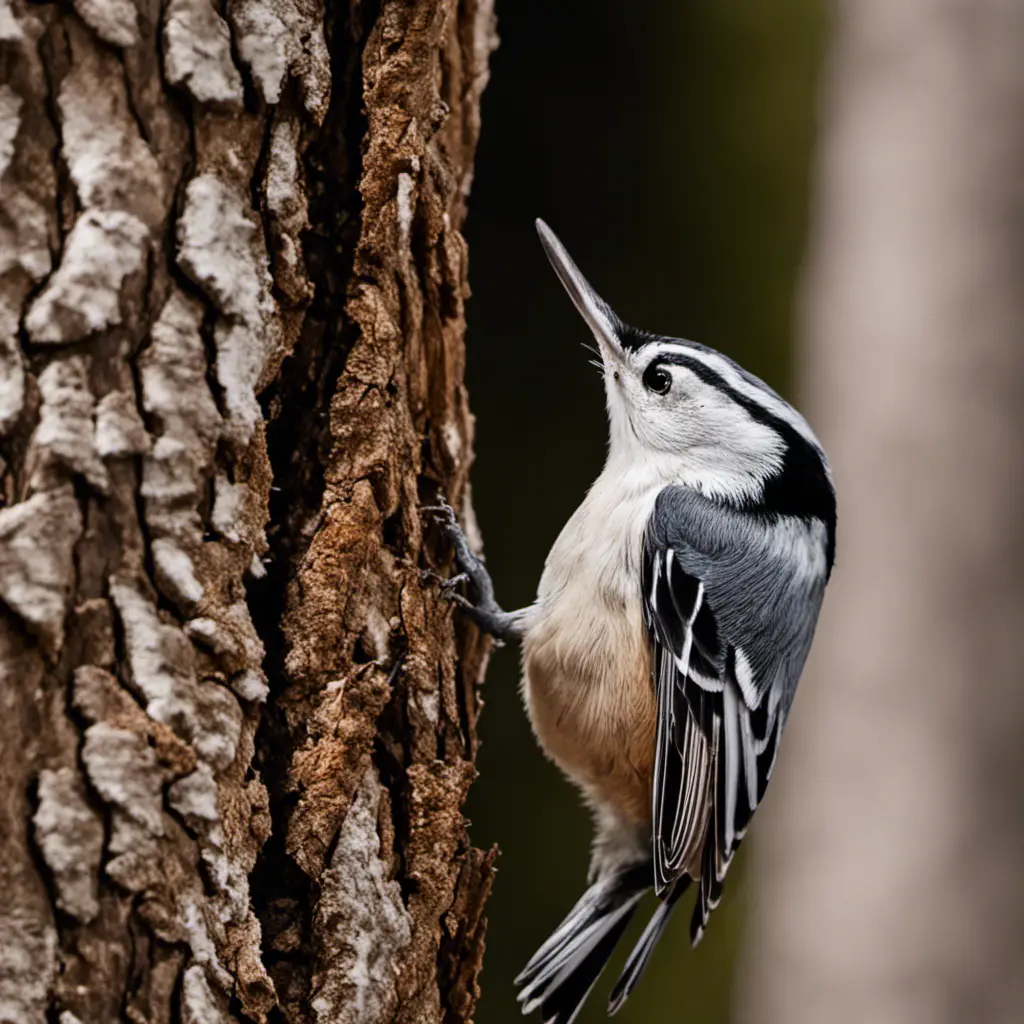
With its distinctive blue-gray back and rusty-colored underparts, the White-breasted Nuthatch (Sitta carolinensis) is a common sight in North American forests. This small songbird, measuring about 5.5 inches in length, is known for its unique behaviors and habits.
Nesting Habits:
White-breasted Nuthatches typically nest in tree cavities, often excavating their own nesting holes.
They line their nests with soft materials such as grass, bark, and feathers.
Males and females work together to build the nest and incubate the eggs.
Foraging Behavior:
These nuthatches are known for their ability to move headfirst down tree trunks and branches.
They primarily forage for insects, seeds, and nuts.
White-breasted Nuthatches have a unique technique of wedging nuts and seeds into tree bark and then using their bill to hammer them open.
Understanding the nesting habits and foraging behavior of the White-breasted Nuthatch provides insight into its adaptation to its forest habitat and its ecological role as a seed disperser.
White-throated Sparrow
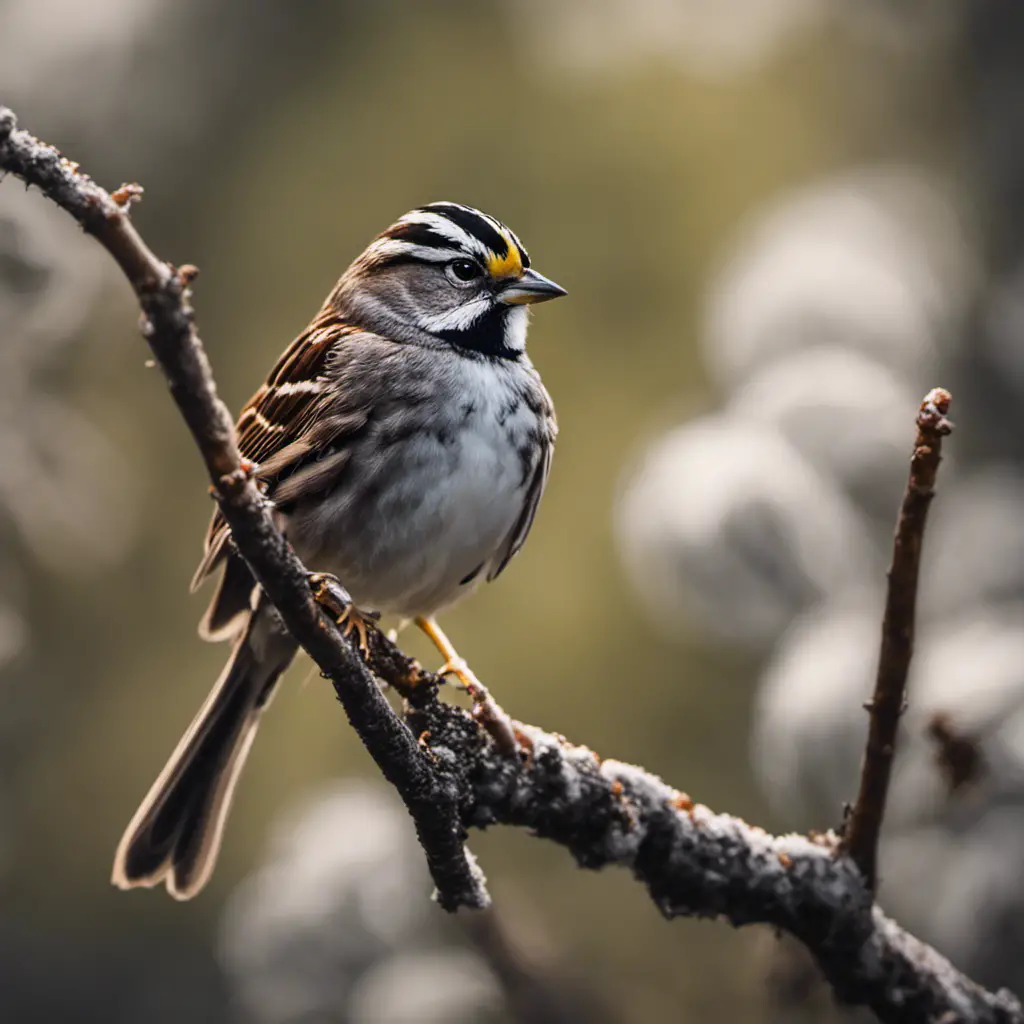
The White-throated Sparrow, recognized by its distinct white stripes on its head and yellow spots between its eyes and bill, is a migratory songbird commonly found in North America. This species exhibits fascinating bird migration patterns, with individuals traveling long distances from their breeding grounds in Canada and the northern United States to their wintering habitats in the southern parts of the continent.
These sparrows are known for their distinctive song, which is used to establish and defend territories during the breeding season. Mating behaviors of the white-throated sparrow include courtship displays and vocalizations, where males sing to attract females. Once a pair has formed, they build a cup-shaped nest on or near the ground, where the female lays and incubates the eggs.
The white-throated sparrow is an intriguing species to study, providing valuable insights into avian migration and mating behaviors.
American Kestrel
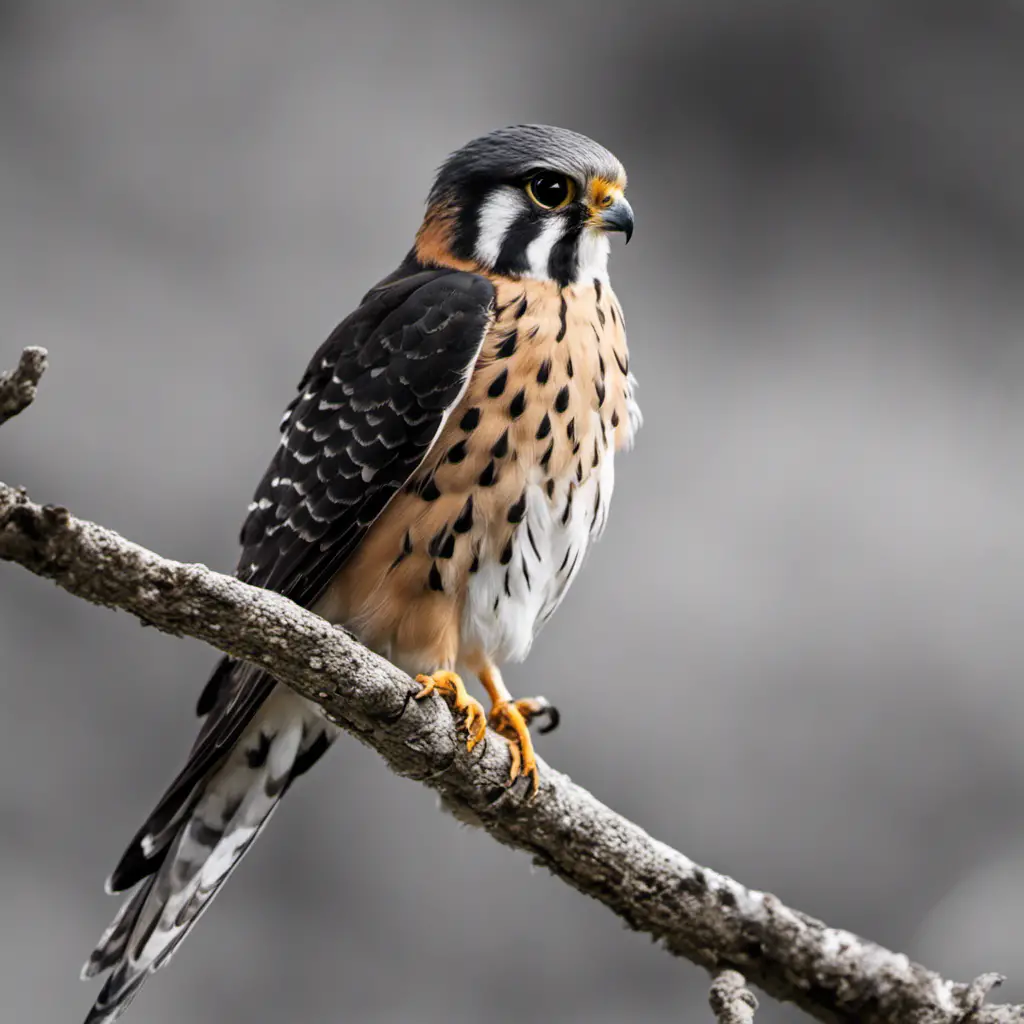
Recognized for its vibrant plumage and impressive hunting skills, the American Kestrel is a small falcon species commonly found throughout North America. This bird has a distinct appearance, with males displaying a combination of blue-gray wings, reddish-brown back and tail, and a white and black facial pattern. Females, on the other hand, have a more subdued coloration with brown wings and a streaked belly.
The American Kestrel is known for its exceptional hunting abilities, relying on its keen eyesight and agile flight to catch insects, small mammals, and birds. Interestingly, this species is also known for its migratory behavior. During the colder months, American Kestrels from northern regions will migrate southward to find more favorable conditions, including abundant prey and suitable nesting sites.
This seasonal movement allows them to maximize their chances of survival and reproductive success.
Belted Kingfisher
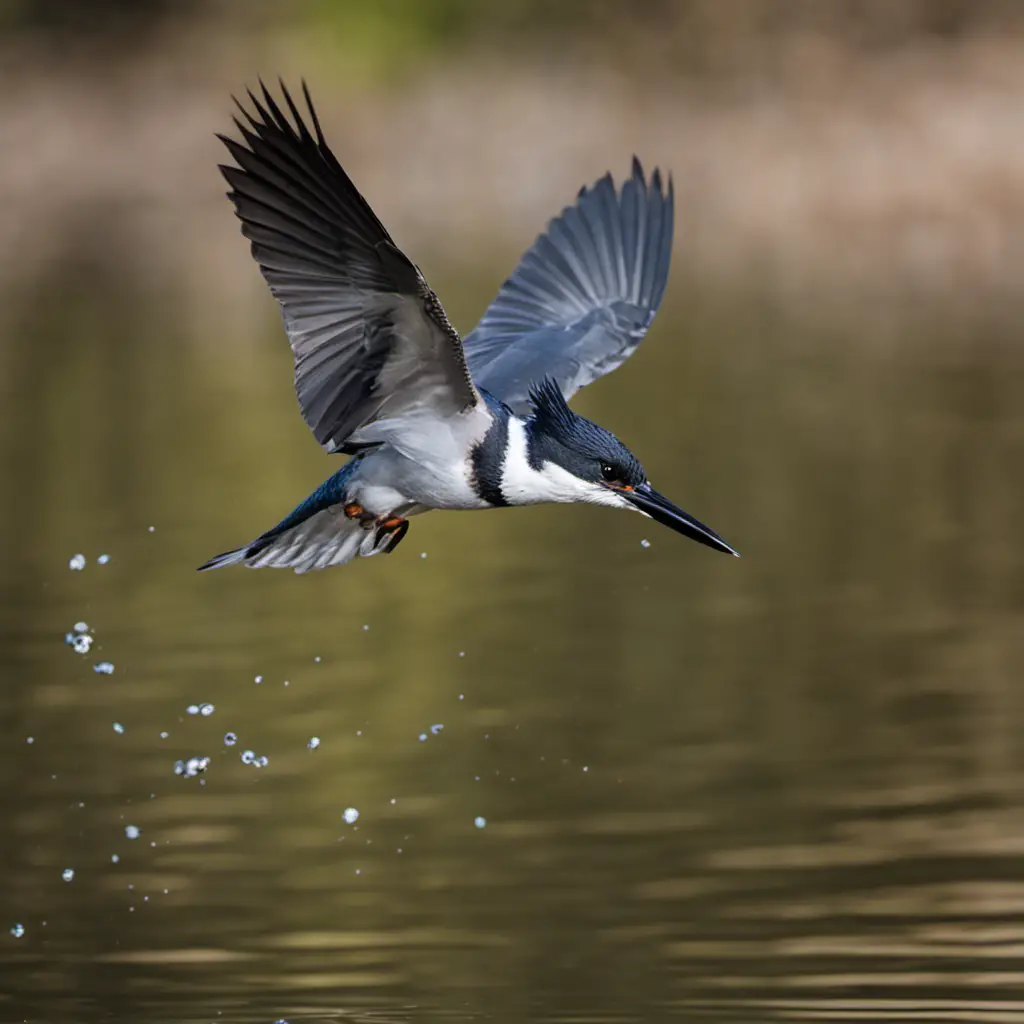
The Belted Kingfisher, a medium-sized bird found across North America, is known for its distinctive rattling call and unique fishing behavior. This species is commonly found near bodies of water such as streams, rivers, and lakes, where it hunts for its primary food source – fish. The belted kingfisher has a specialized hunting behavior that involves hovering over the water before diving headfirst to catch its prey. It has a long, sharp bill that is perfectly adapted for grasping fish.
In terms of habitat, the belted kingfisher prefers areas with steep banks or cliffs where it can excavate its nesting burrow. These burrows are typically located near the water’s edge and can be up to six feet deep. Breeding usually occurs from April to July, with both males and females participating in the nest excavation. The female lays a clutch of 5-8 eggs, which are incubated by both parents for about 24-25 days. The young birds fledge after approximately 27-28 days and become independent shortly after. Overall, the belted kingfisher’s habitat and hunting behavior, as well as its breeding and nesting patterns, are fascinating aspects of its biology.
| Habitat | Hunting Behavior | Breeding and Nesting Patterns |
|---|---|---|
| Bodies of water | Hovering and diving | Excavate nesting burrows |
| Streams, rivers, lakes | Catching fish | Breeding from April to July |
| Steep banks, cliffs | Specialized bill | Both parents participate |
| Near water’s edge | Incubation period: 24-25 days | |
| Fledging period: 27-28 days |
Black Guillemot
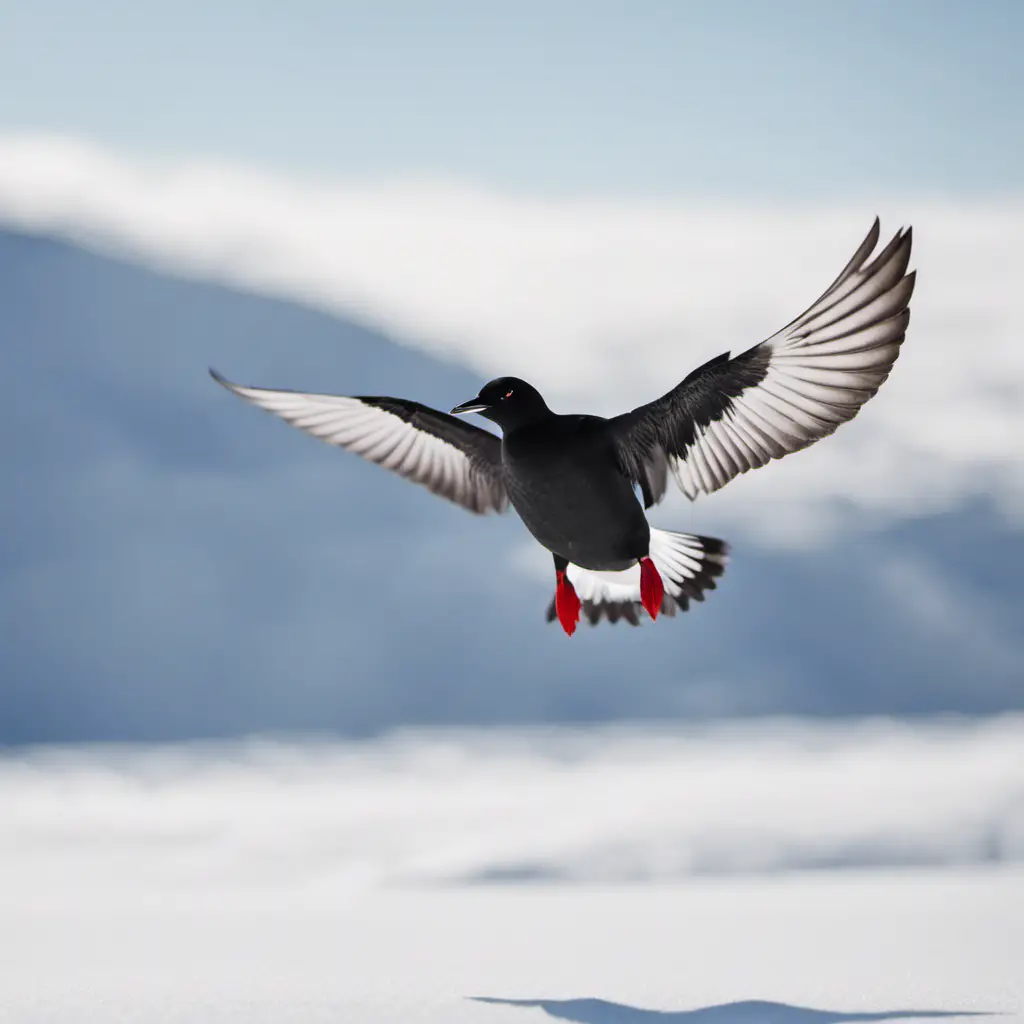
Black Guillemots, also known as Tysties, are seabirds that can be found along the coastal regions of the northern hemisphere. These birds are known for their striking black plumage, white wing patches, and bright red feet.
Here are some fascinating facts about Black Guillemots:
- Black Guillemots are agile divers, capable of descending to depths of up to 200 feet to catch fish.
- They primarily feed on small fish, such as sand eels and herring, as well as crustaceans and mollusks.
- During the breeding season, their diet shifts to include more crustaceans and insects.
- Black Guillemots form monogamous pairs and nest in crevices and rocky ledges along the coast.
- They are migratory birds, and populations from the northern regions, such as Greenland and the Arctic, migrate south during the winter months.
Understanding the behavior and habits of these beautiful seabirds enhances our appreciation for the intricate nature of bird migration and the importance of coastal habitats for their survival.
Black Skimmer
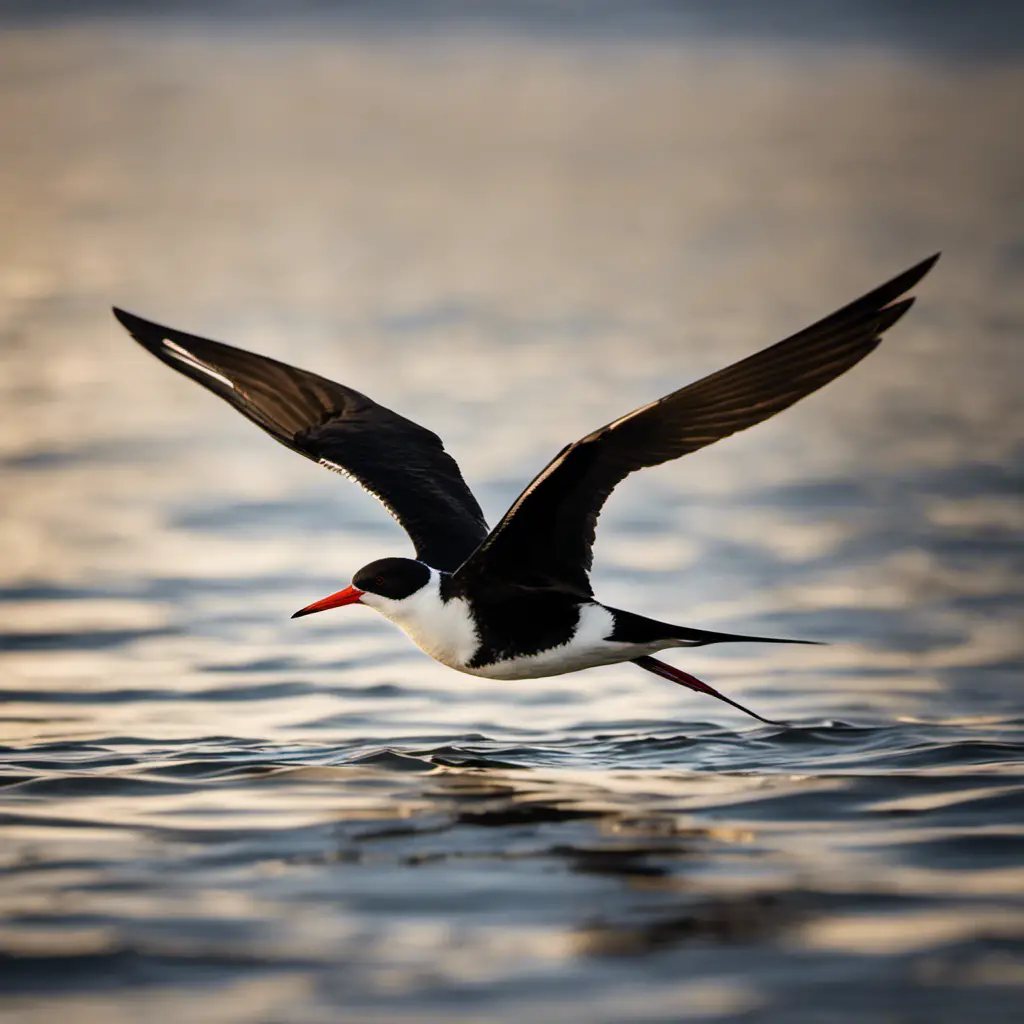
The Black Skimmer, widely known for its unique feeding technique, has a lower mandible that is longer than its upper mandible, allowing it to skim the water’s surface for prey. This distinctive feature sets it apart from other bird species and enables it to catch small fish, crustaceans, and insects while in flight. The Black Skimmer is primarily found along coastal areas and estuaries of North and South America. In terms of nesting habits, it typically forms colonies on sandy beaches or gravel bars, where it lays its eggs in shallow depressions in the sand. The feeding behavior of the Black Skimmer is fascinating to observe, as it flies just above the water, with its lower mandible slicing through the surface to catch prey.
| Nesting Habits | Feeding Behavior |
|---|---|
| Forms colonies on sandy beaches or gravel bars | Skims the water’s surface for prey |
| Lays eggs in shallow depressions in the sand | Catches small fish, crustaceans, and insects while in flight |
Black Tern
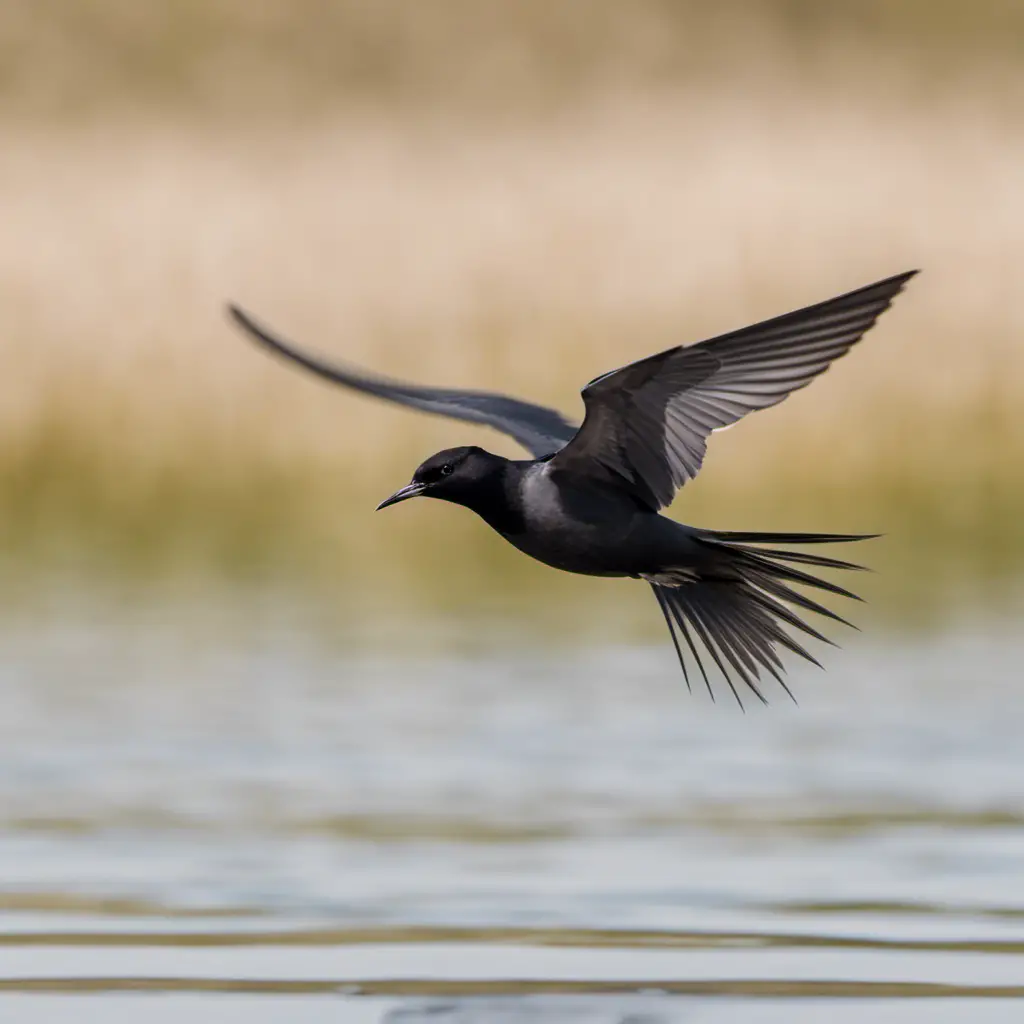
The Black Tern is a migratory bird species that can be found in wetland habitats across North America. This elegant bird is known for its distinctive black and white plumage, slender body, and graceful flight.
Here are some key facts about the Black Tern:
Migration patterns: Black Terns undertake long-distance migrations, traveling from their breeding grounds in North America to their wintering areas in South America. They follow specific flyways and stopover sites along their journey.
Breeding habits: Black Terns form monogamous pairs during the breeding season. They build their nests in shallow water or floating vegetation in wetlands. Females lay 2-4 eggs, which both parents take turns incubating. After hatching, the chicks are cared for and fed by both parents until they fledge.
Diet: Black Terns are primarily insectivorous, feeding on a variety of aquatic insects such as dragonflies, beetles, and mayflies. They also consume small fish and crustaceans.
Conservation status: The Black Tern population has been declining in recent years due to habitat loss, pollution, and climate change. It is currently listed as a species of conservation concern.
Conservation efforts: Several conservation organizations and wetland management programs are working to protect and restore the wetland habitats that Black Terns rely on. These efforts include habitat preservation, water quality improvement, and public awareness campaigns.
Common Tern
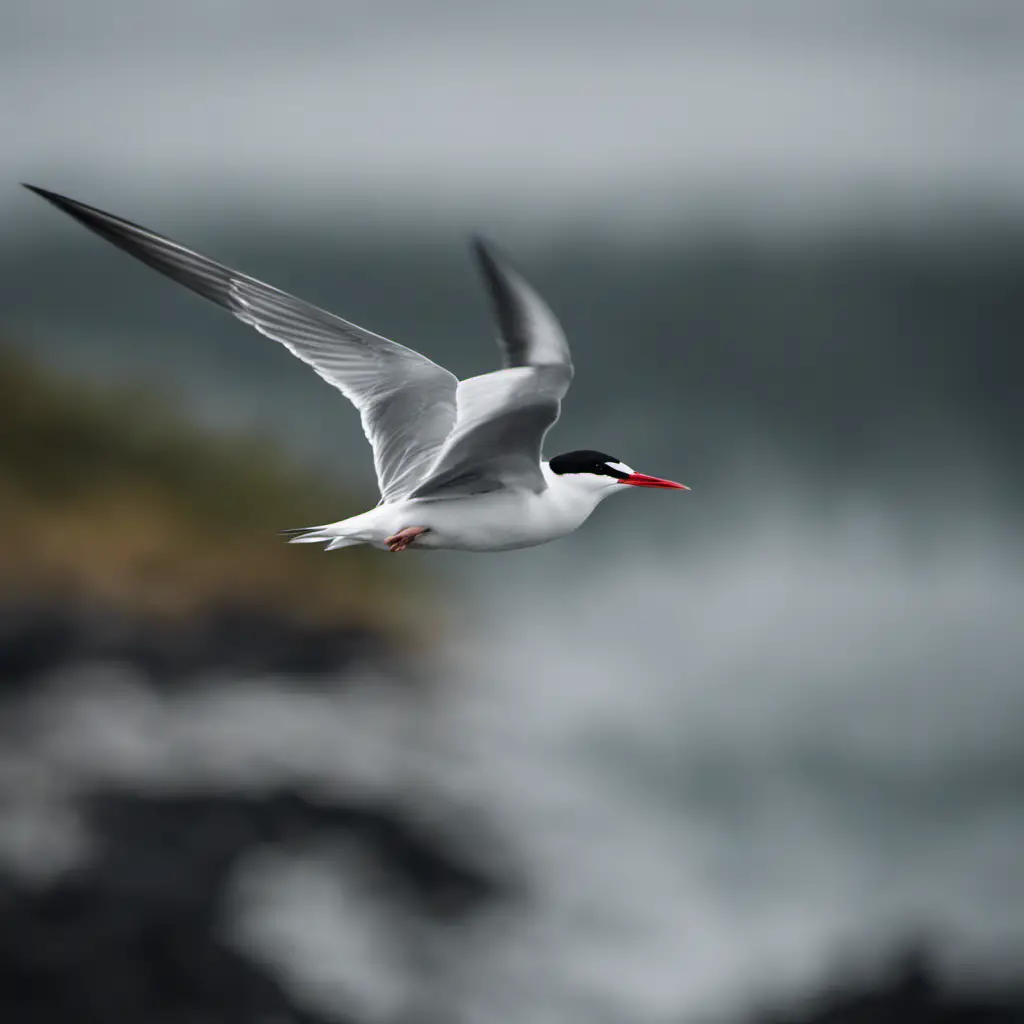
The Common Tern, a migratory species found in wetland habitats across North America, shares similar breeding habits and diet as the Black Tern. These elegant birds are known for their graceful flight and striking black and white plumage.
During the breeding season, which typically occurs from May to August, Common Terns form large colonies on sandy or rocky islands in lakes and coastal areas. They construct nests on the ground using plant materials and lay 1-3 eggs.
The diet of Common Terns consists mainly of small fish, which they catch by diving from the air into the water. They are highly skilled hunters, using their sharp eyesight and agile flight to locate and capture their prey.
In the winter, Common Terns migrate to warmer regions, such as the Caribbean and South America, where they spend the non-breeding season. Bird migration is a complex phenomenon that involves long-distance travel and navigation abilities. Common Terns, like many other migratory birds, rely on environmental cues, such as day length and magnetic fields, to navigate their way across vast distances.
Eastern Meadowlark
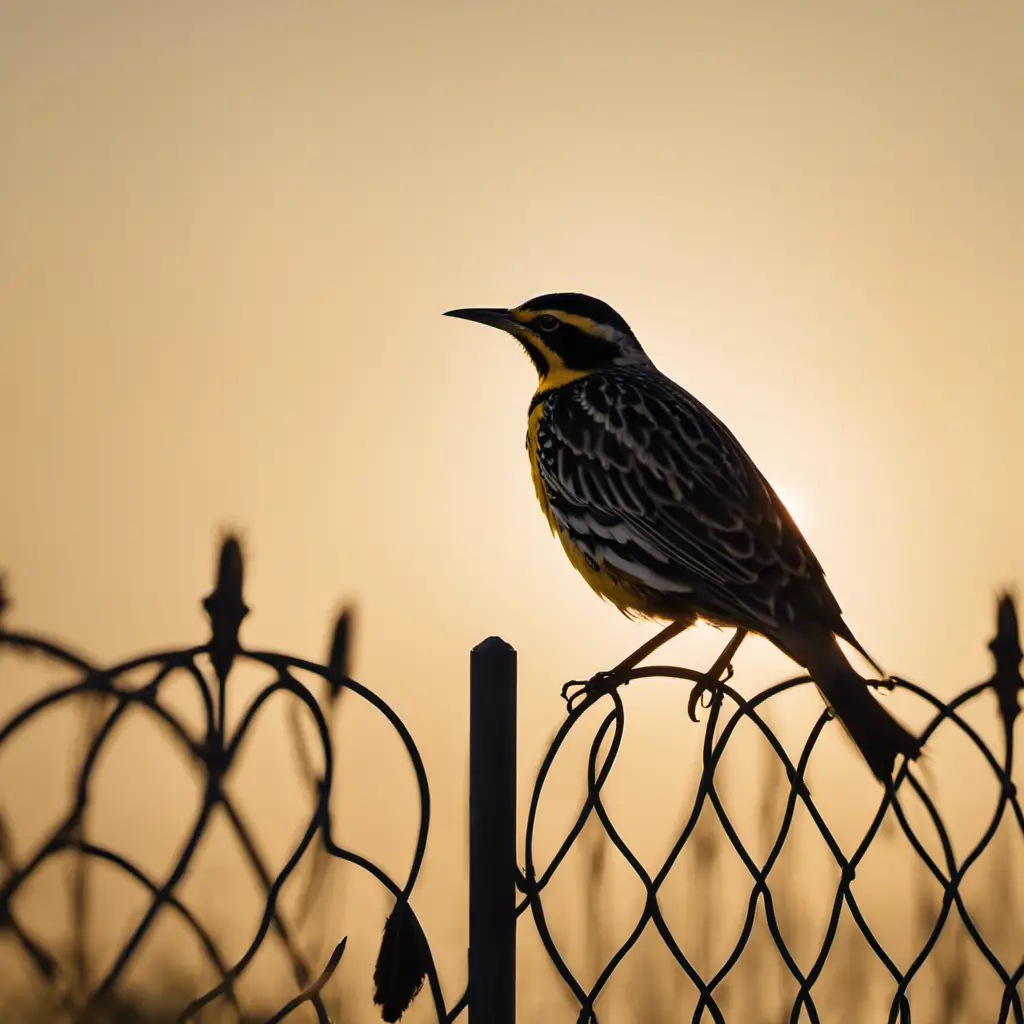
Eastern Meadowlarks are known for their melodious songs and can be found in open grasslands and meadows throughout eastern North America. These birds have specific habitat preferences and exhibit interesting migratory patterns.
Habitat preferences:
Eastern Meadowlarks prefer open grasslands and meadows.
They are often found in agricultural fields, pastures, and prairies.
These birds require areas with tall grasses for nesting and foraging.
They avoid dense forests and urban areas.
Eastern Meadowlarks are adaptable and can also utilize abandoned fields and grassy roadsides.
Migratory patterns:
Eastern Meadowlarks are partially migratory, with some individuals migrating and others staying in their breeding areas year-round.
Migratory populations breed in the northern parts of their range and move south for the winter.
Non-migratory populations are found in the southern parts of their range, where the climate is mild enough to support them year-round.
Understanding the habitat preferences and migratory patterns of Eastern Meadowlarks is essential for conservation efforts and ensuring the preservation of their populations.
Great Black-backed Gull
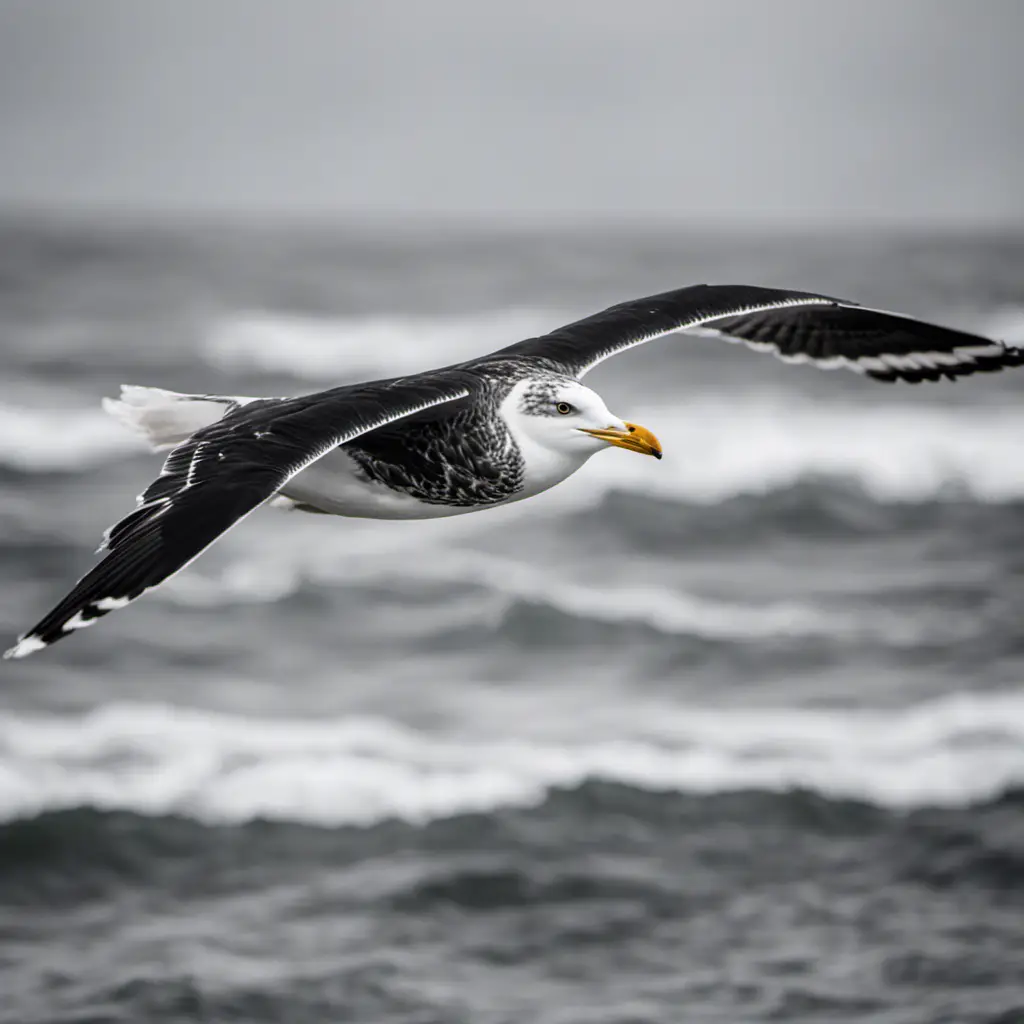
Great Black-backed Gulls are large, predatory seabirds that can be found along the coastlines of North America, Europe, and Asia. These gulls are known for their striking black and white plumage, with a wingspan reaching up to 5 feet. They have a strong, hooked beak and sharp talons, which they use to hunt and feed on a variety of prey.
Great Black-backed Gulls display a diverse range of predation patterns, including scavenging on carrion, stealing food from other birds, and capturing live prey such as fish, crustaceans, and small mammals. They are opportunistic feeders and have been observed preying on smaller seabirds and even their own species’ chicks.
In terms of habitat preferences, Great Black-backed Gulls are typically found in coastal areas, including rocky cliffs, sandy beaches, and offshore islands. They are adaptable birds that can also be seen in urban environments, where they scavenge for food at garbage dumps and fishing harbors.
Overall, Great Black-backed Gulls are fascinating and adaptable predators, well-suited for their coastal habitats.
Osprey
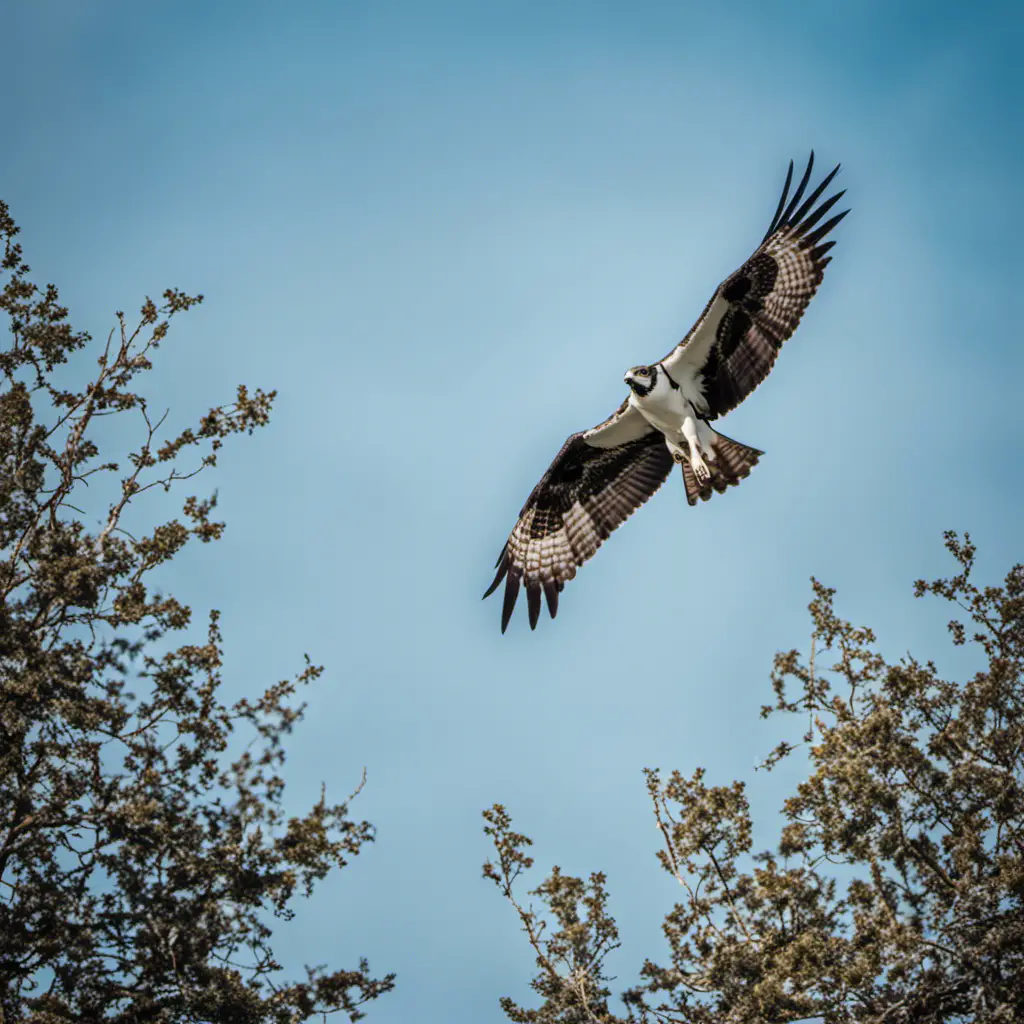
Ospreys, also known as fish hawks, are large raptors that can be found near bodies of water across North America, Europe, and Asia. These magnificent birds have unique characteristics that allow them to thrive in their habitat. Some key points to understand about ospreys are:
Habitat: Ospreys prefer to nest near bodies of water, such as rivers, lakes, and coastal areas. They build their nests on tall structures like trees, cliffs, or man-made platforms.
Diet: Ospreys are specialized fish-eaters, with a diet consisting almost entirely of fish. They have sharp, curved talons and long, sharp beaks that enable them to catch and hold onto their slippery prey.
Migration Patterns: Ospreys are migratory birds, traveling long distances between their breeding and wintering grounds. They follow specific flyways and can cover thousands of miles during their migration.
Nesting Behavior: Ospreys are monogamous and often return to the same nesting site year after year. They build large nests made of sticks and line them with softer materials like moss and seaweed.
Conservation Status: Ospreys have made a remarkable recovery from past declines due to pesticide use. However, they still face threats such as habitat loss, pollution, and disturbance at nesting sites.
Understanding these aspects of osprey biology and behavior can help us appreciate and protect these remarkable birds.
Pied-billed Grebe
The pied-billed grebe is a small aquatic bird that can be found in wetlands throughout North and South America. This species, known scientifically as Podilymbus podiceps, is characterized by its unique appearance, with a black and white body and a distinctive thick bill that gives it its name.
One interesting aspect of the pied-billed grebe is its breeding behavior. These birds are monogamous and form pairs during the breeding season. They build floating nests made of vegetation, often attached to emergent vegetation in the water. The female usually lays 4 to 7 eggs, which are incubated by both parents. Once the chicks hatch, they are able to swim and dive immediately.
In terms of habitat and range, the pied-billed grebe is highly adaptable and can be found in a variety of wetland habitats, including marshes, ponds, lakes, and slow-moving rivers. They are present throughout much of North and South America, from Canada and the United States, all the way down to Argentina and Chile.
To provide a visual representation of the pied-billed grebe’s appearance, here is a table showcasing its key features:
| Feature | Description |
|---|---|
| Body color | Black and white |
| Bill | Thick and pied |
| Size | Small, about 12 to 15 inches in length |
| Wingspan | Approximately 18 to 22 inches |
| Habitat | Wetlands, such as marshes and ponds |
Overall, the pied-billed grebe is a fascinating bird with unique breeding behavior and a wide habitat range. Its black and white coloration and distinct bill make it easily recognizable in wetland environments throughout the Americas.
Frequently Asked Questions
What Is the Typical Habitat of the Black-Capped Chickadee?
The typical habitat of the black-capped chickadee includes deciduous and mixed forests. This bird is known for its bold behavior and distinctive vocalizations. Threats to its population include habitat loss and climate change, but conservation efforts focus on protecting its habitat and promoting awareness.
How Does the Northern Flicker Differ in Appearance From the Red-Headed Woodpecker?
The northern flicker and the red-headed woodpecker differ in appearance in various ways, such as their coloration and markings. Additionally, they also have different habitat preferences, with the northern flicker favoring open woodlands and the red-headed woodpecker preferring open areas with scattered trees.
What Is the Diet of the White-Breasted Nuthatch?
The diet of the white-breasted nuthatch consists mainly of insects, seeds, and nuts. This diet has a significant impact on the behavior of the nuthatch, helping it forage efficiently and store food for the winter.
How Does the American Kestrel Hunt for Its Food?
The American kestrel utilizes various hunting techniques to capture its prey. It relies on its exceptional vision and agility to spot and chase down small mammals, birds, insects, and reptiles. Its hunting strategies are adaptable and efficient, making it a successful predator.
What Are the Distinguishing Features of the Black Guillemot Compared to Other Black and White Birds?
Distinguishing features and behavior patterns are important aspects to consider when comparing black and white birds. In the case of the black guillemot, its distinct characteristics and unique behaviors set it apart from other species.
Conclusion
In conclusion, black and white birds are a diverse group of species found in various habitats. These birds include the Black-capped Chickadee, Black-and-white Warbler, Downy Woodpecker, Hairy Woodpecker, Northern Flicker, Eastern Meadowlark, Great Black-backed Gull, Osprey, and Pied-billed Grebe.
Their distinctive coloration serves different purposes, such as camouflage, communication, or warning signals. Further research is needed to better understand the evolutionary significance and ecological roles of black and white plumage in birds.

An avid ornithologist, zoologist and biologist with an unwavering passion for birds and wild animals.
Dr. Wilson’s journey in ornithology began in childhood and led him to obtain a Ph.D. in Ornithology from the prestigious Avian Research Institute. He has worked closely with renowned experts in the field and conducted extensive research and field studies globally.

